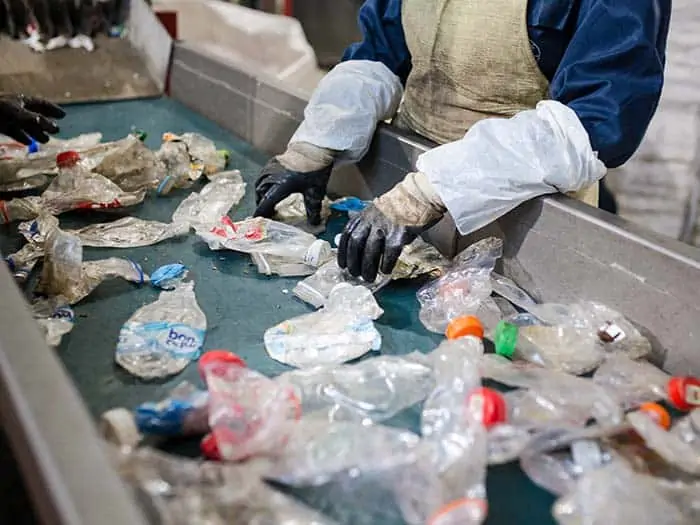December 1, 2021

Recycling contamination occurs when materials are placed into the wrong recycling bin (placing a glass bottle into a mixed paper recycling bin, for example) or when materials are not properly cleaned, such as when food residue remains on a container. Simply throwing something into the recycling hoping that it will find its way to where it needs to eventually be is a major cost for your solid waste or public works department in time and money.
Bagged recyclables and other soft plastics cannot be processed by most sorting machinery, and sorting them by hand expose workers to health risks. Soft plastics also cause damage to the sort line. The level of contamination in a recycling bin directly affects your recycler’s ability to recover resources effectively.
November 15th was America Recycles Day. We’ve learned a lot about recycling facilities from the projects we’ve completed and the clients with whom we’ve worked. In that spirit, Betsy Powers of SCS shares a few tips for recycling right every day and greatly reducing contamination.
- Don’t bag your recyclables.
- If you use a plastic bag to collect/store your recyclables, dump them into your recycling cart loose and reuse the plastic bag or put it in your trash. The bags get caught up in the machinery used to sort equipment, leading to facility downtime and requiring workers to enter the large pieces of equipment to remove bags.
- Take plastic grocery bags to your local supermarket drop-off containers. Sandwich bags, bubble wrap, plastic wrapping, and other flimsy materials that don’t survive the poke test (where the plastics are soft enough to push your finger through it) can also be taken to drop-off areas. This does not include chip bags, cereal bags, etc.
- Don’t crush/flatten cans or containers.
- Recycling facilities typically include equipment that sorts items by shape (2D paper vs. 3D containers (plastic and metal)). A crushed aluminum beverage can may be treated as 2D and be sorted with the paper stream, either contaminating a bale of paper or being picked out as contamination and going to a landfill (either way, not being recycled).
- Similar to above, break down boxes, so they are identified as paper (2D).
- Empty your containers.
- If your water bottle has water in it, it may not get recycled. The extra weight added by the liquid can make an item get missed by the sorting equipment.
- If an item consists of mixed materials (e.g., paper-bubble wrap envelopes, laminated paper, plastic, and a metal bird feeder), throw it in the trash.
- Generally, items with a dimension less than 2 inches (e.g., straws, bottle caps, coffee pods, plastic cutlery, paperclips) will end up as residue and go to a landfill, so consider just throwing those smaller items right into your trash. This saves money and makes the recycling operations more efficient.
- Tips:
- Keep plastic caps on the bottle and place them in the recycling bin.
- Store metal bottle caps in a tin can, pinch the top of the tin can together to hold the bottle tops, then put the can in your recycling bin.
- It’s tempting to put items in our recycling bins that we want to be recycled, but when in doubt, throw them out.
- “Wishcycling” contaminates loads and adds costs.
You can learn more about recycling and recycling right at https://www.recyclemorewisconsin.org/.
Posted by Diane Samuels at 6:00 am


